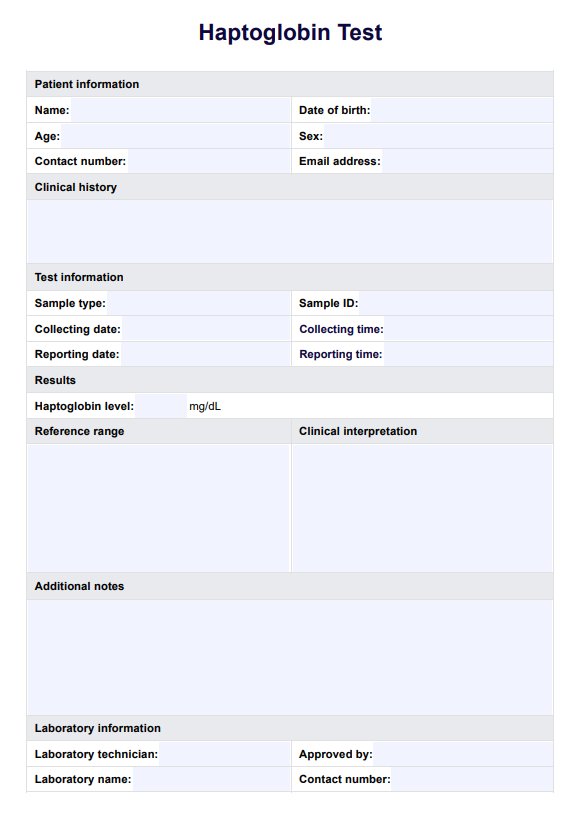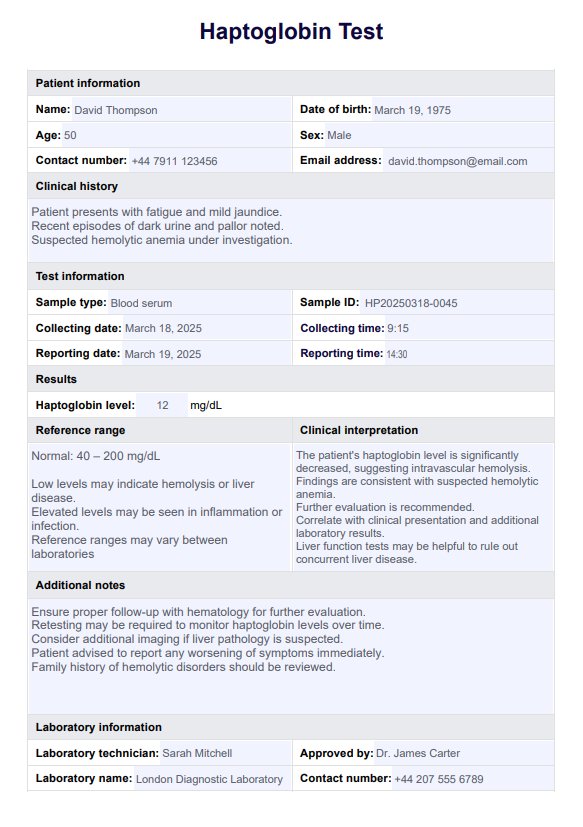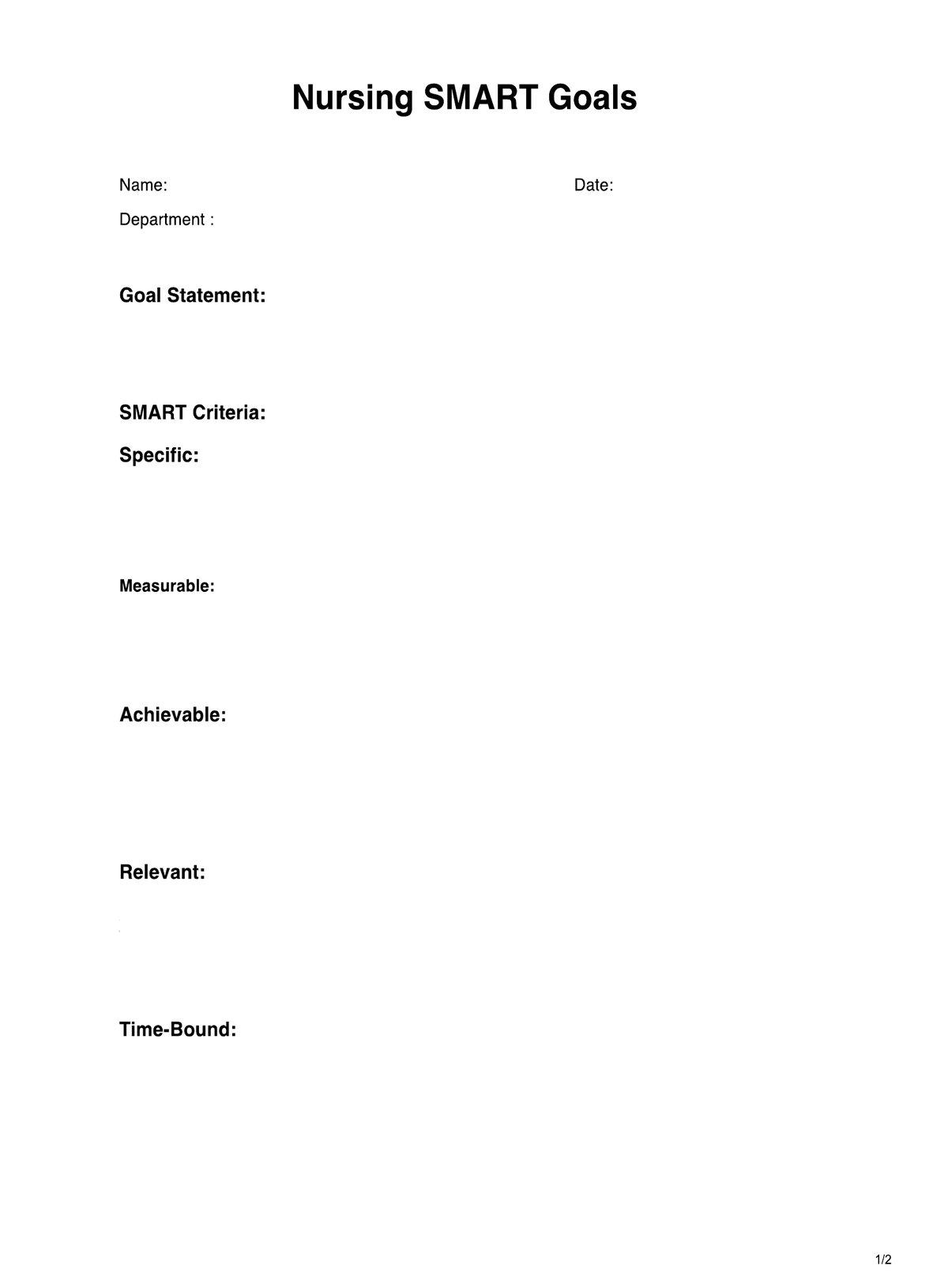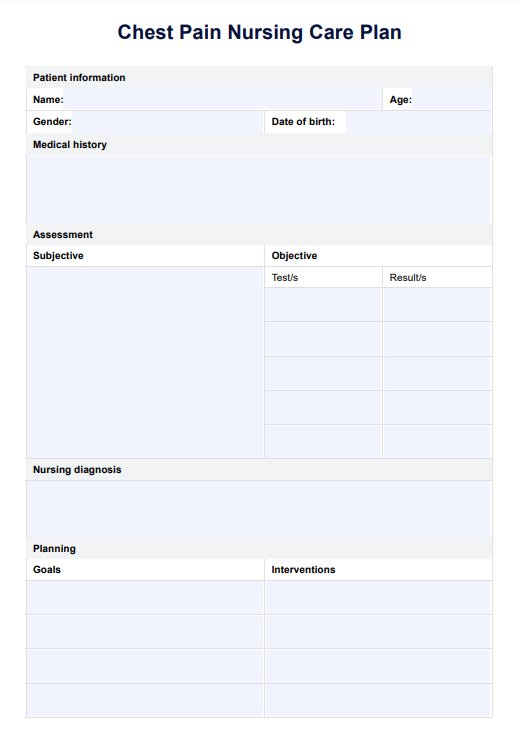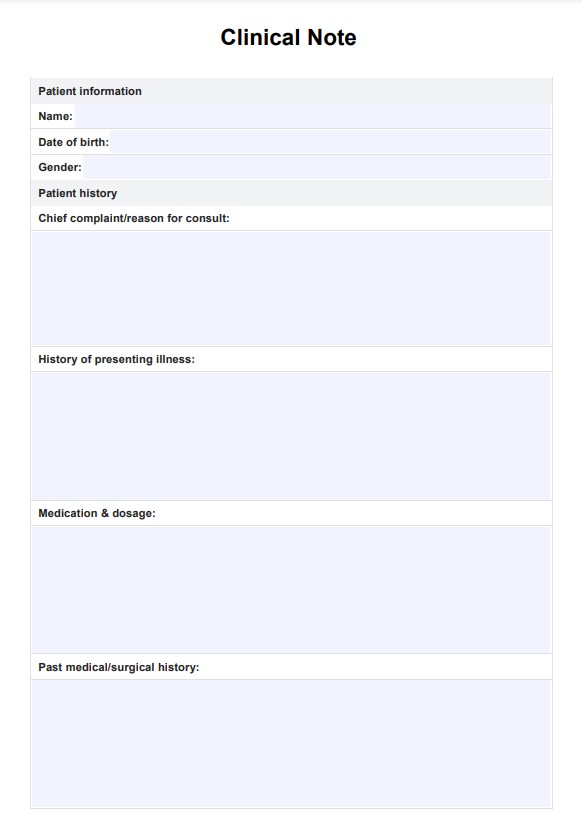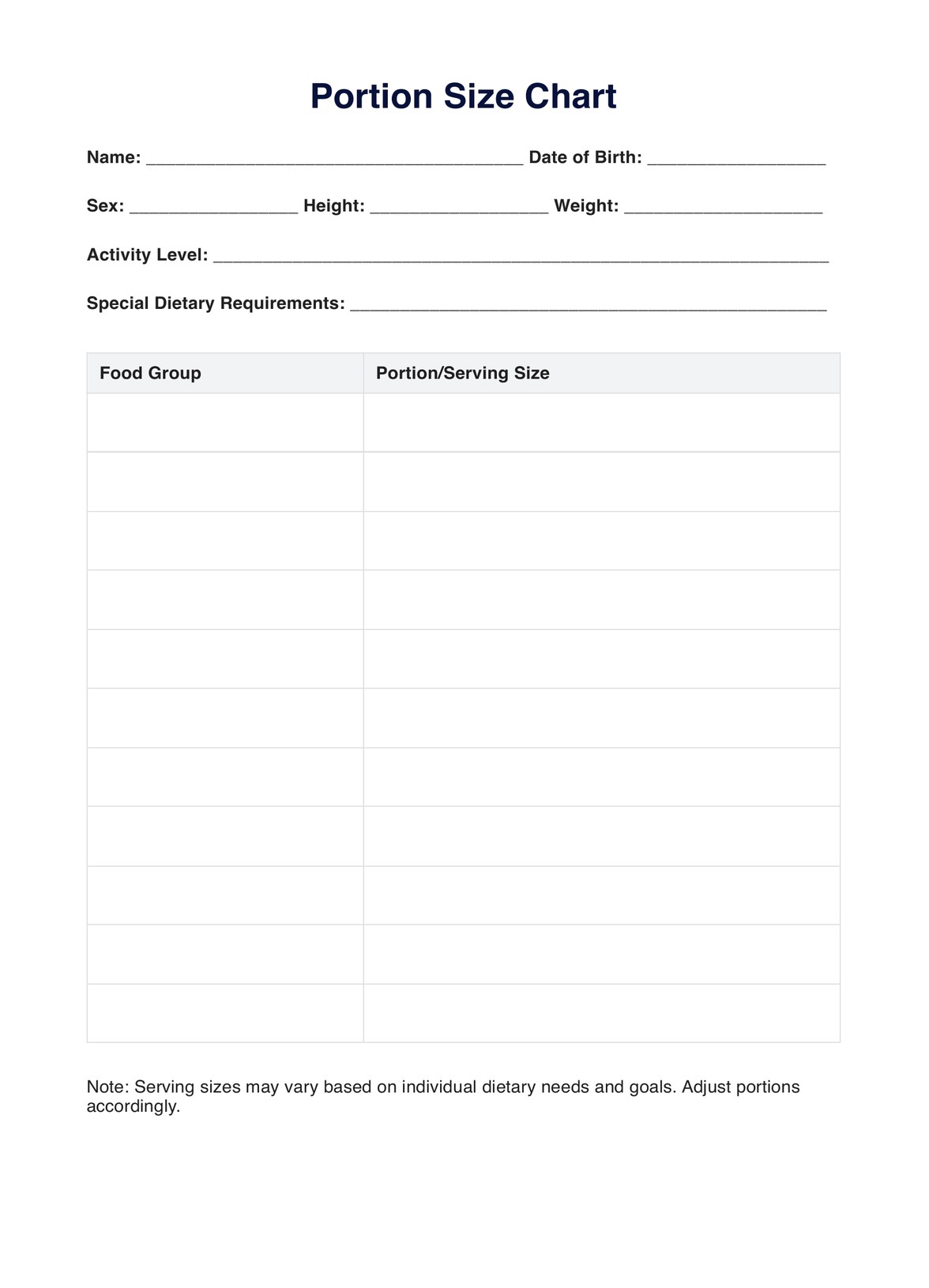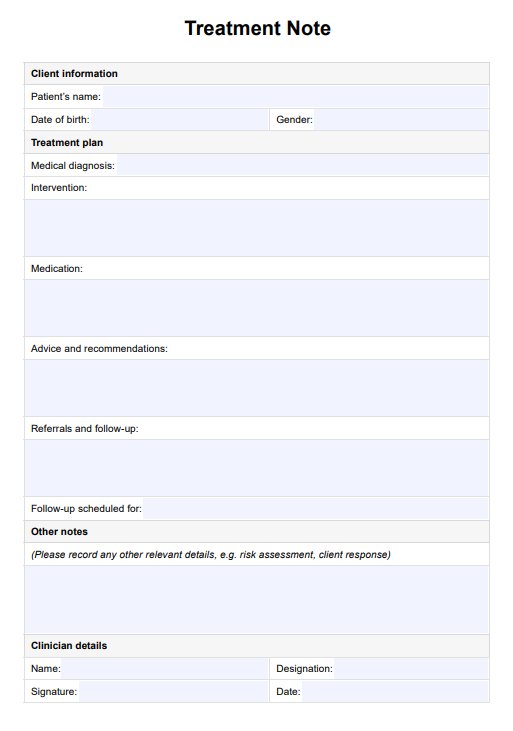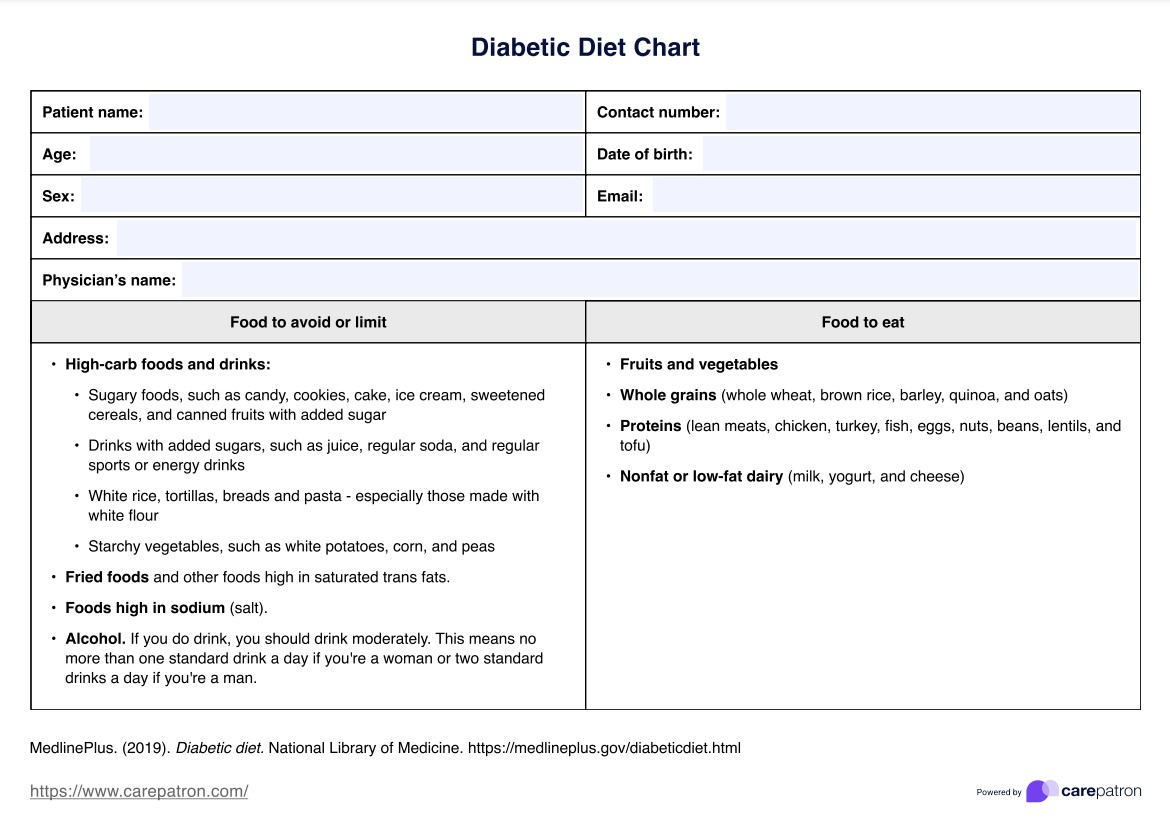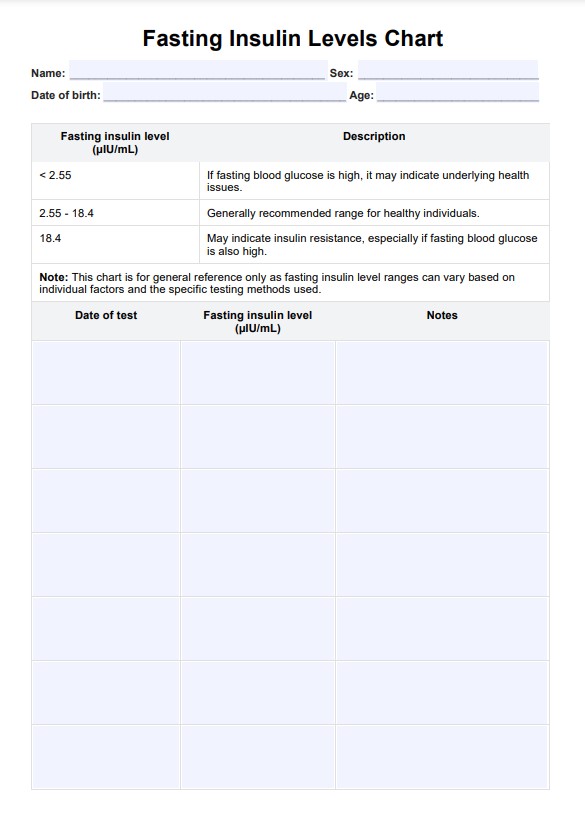Haptoglobin
Easily record and interpret Haptoglobin Test results with our simple template. Track levels, monitor conditions, and support accurate clinical decisions.


What is a Haptoglobin (HP) Test?
A Haptoglobin Test measures the amounts of haptoglobin in one's blood. Haptoglobin is a protein produced by the liver that commonly binds with “free hemoglobin”, a byproduct of red blood cell destruction, to create a haptoglobin-hemoglobin complex, which is commonly removed from the body as it passes through the liver. Because of its nature, the protein is used as a marker that helps assess the balance between red blood cell destruction and production. Whenever haptoglobin levels drop, it means that the body is eliminating red blood cells faster than the liver can produce it.
Generally, imbalances result from inherited conditions like spleen disorders, myelofibrosis, and cirrhosis, causing the person with said condition to develop hemolytic anemia. Practitioners can detect hemolytic anemia or any other type of anemia through a Haptoglobin Test.
A practitioner will usually request a Haptoglobin Test if the patient exhibits symptoms of hemolytic anemia, such as pale skin, jaundice, severe fatigue, cold hands and feet, upper abdominal pain, lightheadedness, dizziness, arrhythmia, or shortness of breath.
Haptoglobin Template
Haptoglobin Example
How does the haptoglobin blood test work?
If you need a Haptoglobin Test template that functions as both a request form and a document to write down your analysis, interpretation, and any other observations or findings, get our template by following these steps"
Step 1: Access the template
Click the "Use template" button in the Carepatron app to open the template. This lets you customize the form. You can also download a PDF version by choosing "Download."
Step 2: Interview, assess, and examine the patient
Before having your patient undergo the test, it's best to interview them regarding their symptoms, assess their condition, or perform a physical examination to determine if the test is the appropriate assessment. If it is, you may fill out the request form section of the template.
Step 3: Collect the blood sample
Remind your patient to bring the filled-out request form to the laboratory to prove that you requested the Haptoglobin Test. Only then will the practitioner in charge collect a sample to analyze.
Step 4: Analyze and interpret the results
Once you and your patient have the results, you may proceed with the analysis and interpretation. Feel free to use the document section of the template to write down your observations and findings so you can use it as a guide to refer to during treatment approach formulation.
Step 5: Store the template securely
Once done, you can securely store the template. It's recommended that you store physical copies of other relevant documents that belong to the patient within the establishment. Meanwhile, digital copies may be stored on Carepatron, a HIPAA-compliant EHR, where you can limit access to relevant parties only.
When would you use this test?
A medical practitioner, specifically a doctor or a nurse, can use the test:
- When the patient exhibits signs and symptoms of anemia or hemolytic anemia, some of which include shortness of breath, rapid heart rate, jaundice, pale skin, and fatigue.
- When the patient is suspected to have anemia.
- When checking if the patient has a bad reaction to a blood transfusion, the Haptoglobin Test is done alongside the direct anti-globulin test.
If the patient's condition doesn't fall under any of the mentioned scenarios and you believe they can benefit from a test, we'll leave it up to your discretion since you're more aware of the patient's symptoms and medical history.
What do the results mean?
Analysis and interpretation must consider multiple factors affecting a patient's results. Here's what the interpretation of specific results means (Medline Plus, 2024; Mount Sinai Health System, 2024):
- Normal haptoglobin levels: A normal level means the test result falls within the expected healthy range, indicating typical function or no signs of a problem. The normal range is 41–165 mg/dL (410–1,650 mg/L), though values may vary slightly between labs.
- Low haptoglobin levels: This may indicate that red blood cells are breaking down faster than normal, as seen in hemolytic anemia or a reaction to a blood transfusion. It can also suggest liver disease, where the liver isn’t producing enough haptoglobin. Low levels in infants under six months are typically normal and not a cause for concern.
- High haptoglobin levels: This often signals inflammation or tissue damage. They may be associated with conditions like ulcerative colitis, acute rheumatic diseases such as arthritis, severe infections, or chronic inflammatory conditions like diabetes. Elevated levels usually reflect an active inflammatory response.
It is worth noting that haptoglobin lab test results should always be interpreted alongside other clinical information and test findings.
Benefits of Haptoglobin Test template
If you are considering using a Haptoglobin Test template, here are a few key benefits that make it a practical choice:
Easy to use
You don’t need to be a tech expert or a medical professional to use this template. It’s designed with clear sections and prompts, so filling it out is straightforward. Whether tracking patient data or running a diagnostic test, it’s simple and hassle-free.
Saves time
No more starting from scratch or scrambling to organize test results. This template streamlines the process by giving you a ready-made structure you can quickly fill in. It helps you focus on the important stuff, reducing the time spent on paperwork.
Available in digital and printable formats
Whether you prefer going paperless or need a hard copy for a patient’s file, you’ve got options. The template is available in digital and printable versions to fit your workflow. It’s flexible enough to use on your computer or tablet, or you can just print it out and fill it out by hand.
References
Medline Plus. (2024, June 10). Haptoglobin (HP) test. https://medlineplus.gov/lab-tests/haptoglobin-hp-test/
Mount Sinai Health System. (2024, March 31). Haptoglobin blood test information. https://www.mountsinai.org/health-library/tests/haptoglobin-blood-test
Commonly asked questions
Drugs like isoniazid and quinidine can decrease haptoglobin levels. These medications may reduce haptoglobin production or increase red blood cell breakdown.
When red blood cells die, they release hemoglobin into the bloodstream, which can lead to health problems if not correctly cleared. The body uses haptoglobin to bind this free hemoglobin and prevent damage.
Hemoglobin-binding protein haptoglobin is measured in blood tests to check for excessive red blood cell destruction or inflammation. Low levels can indicate conditions like hemolytic anemia or liver disease.


